What Are Circular Knitting Needles? A Complete Guide
What Are Circular Knitting Needles?
When I first learned how to knit many years ago, I didn’t even know about circular knitting needles. I learned to knit on the classic 8-inch (20.32 cm) bamboo straight needles. Once I tried circulars, I quickly realized their benefits and never looked back!
Simply put, circular needles consist of two needle tips connected by a flexible cable. They allow you to knit in the round or work on flat projects with ease.
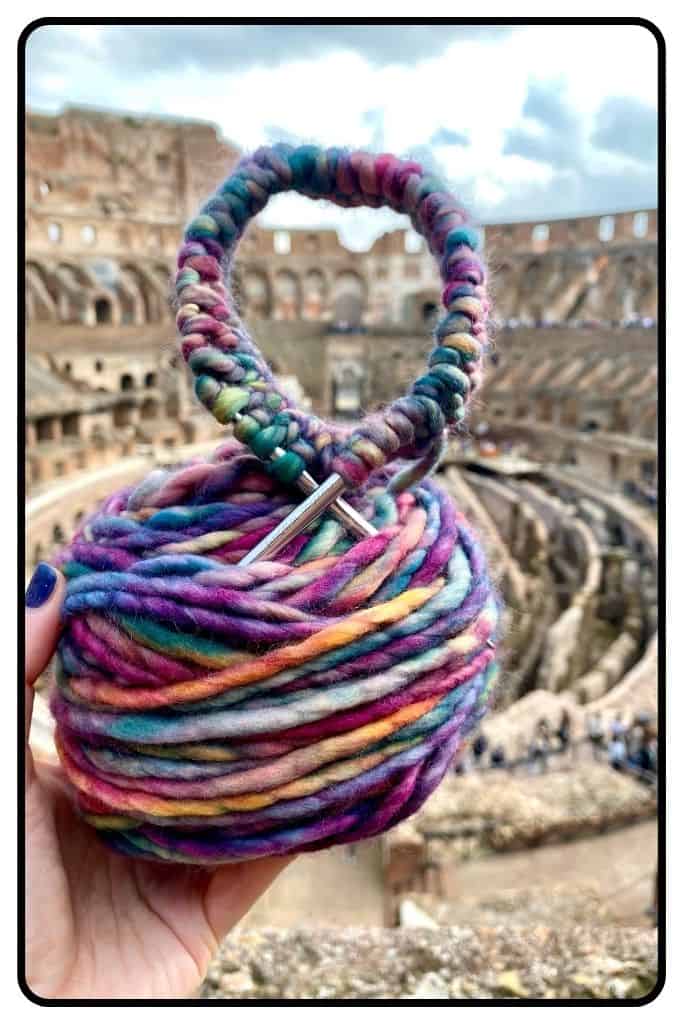
Whether you are a brand new knitter or someone who has been using straight needles since the beginning of your knitting journey, you might be wondering what all the hype is about. These versatile tools can open up a whole new world of knitting possibilities.
Straight Needles vs. Circular Needles
Straight Needles
First, let’s take a look at the classic straight needles:
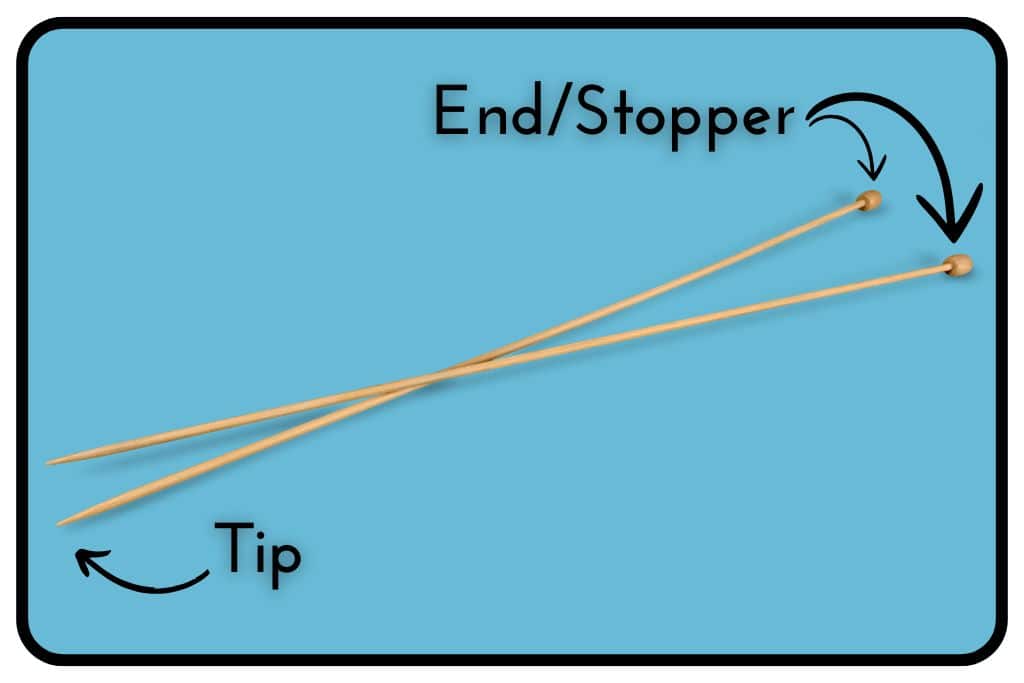
Straight knitting needles are just that—straight. You use the two separate needles together to knit yarn into fabric.
Each needle features a pointed end (referred to as the “tip”) and a stopper on the opposite end to keep stitches from sliding off. Although simple, people have used this important tool for thousands of years and this design remains highly functional today.
In the past, people made knitting needles from wood, bone, ivory, amber, iron, and other natural materials. Today, manufacturers make straight knitting needles from a variety of woods, metals, or plastics. The specific materials used can vary, affecting the overall quality of the needles.
Circular Needles
Circular knitting needles combine both needle tips and a connecting cable into a single tool:
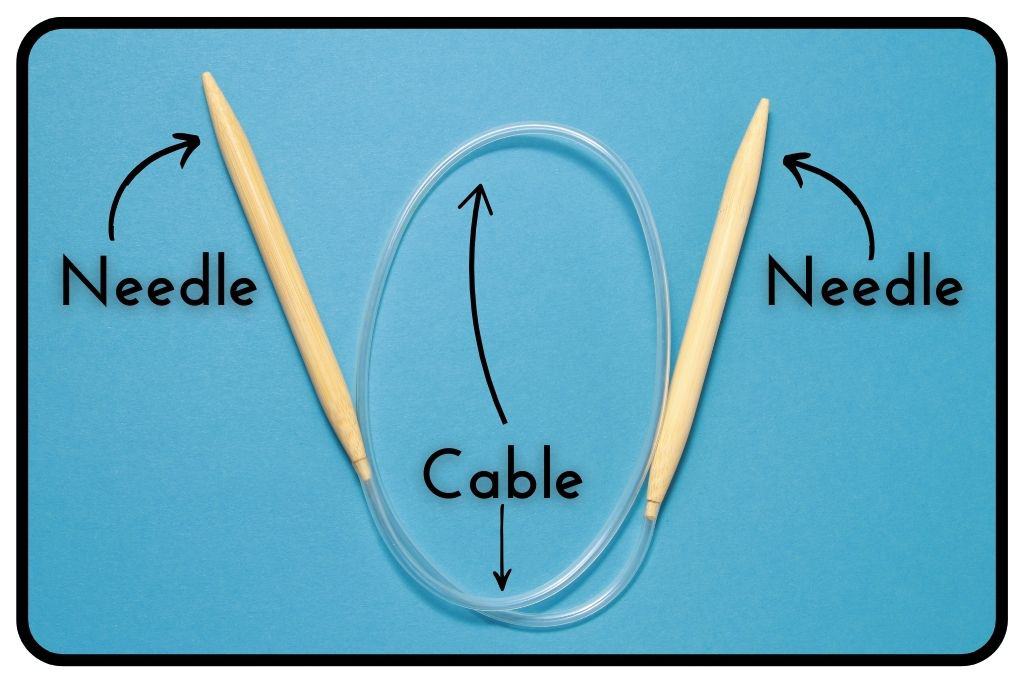
This circular knitting needle pictured has wooden tips and a clear plastic cable. The “connection” is where the needle and cable meet.
Circular knitting needle tips come in a variety of woods, metals, or plastics. Cables are typically made from plastic or coated metal wire, which provides both durability and flexibility.
In 1918, the US issued the first patent for the circular knitting needle. However, historians believe that Europe was using a form of circular knitting needles before 1918. (You can read more about the history of circular knitting needles by reading this article here.)
This tool has evolved significantly over the past 100 years. I believe circular needles are easier to work with, more reliable, and provide a better stitching experience for the knitter. These advantages make circular needles the preferred choice for many knitters—including me!
Are Straight Or Circular Needles Better?
Honestly, this is all about preference.
Here are a few reasons that, in my opinion, circular knitting needles are better than straights:
- It is easier to drop or lose one straight needle.
- You know how annoying it is to have socks that are missing their partners? It’s just as annoying to have one straight needle and not know where its twin went! I’ve dropped straight needles on planes and they roll a few rows away. I’ve lost straight needles in couch seats. And I’ve left a single straight needle on a bus once or twice. Back when I was using straight needles, I had quite the collection of single ladies!
- When the needles are connected by a cable, they are much harder to lose!
- The weight of a project rests on the cable rather than your wrists.
- If you are working on a larger project and a lot of fabric is coming off the needles, the weight rests on your wrists when using straight needles.
- With circular needles, the weight can comfortably rest on the cables and in your lap which takes the stress off your wrists.
- Circulars are much more versatile than straights.
- Anything you can knit with straight needles, you can knit with circulars. But it is not the other way around.
- Whether you are working on a small project flat or a large project in the round, circular needles will always be the most comfortable choice!
- This might be a personal situation, but the movement of a straight needle going up and down drives my cat bonkers.
- Due to the movement of the needles when I knit, the ends of straight needles bob up and down. Usually Phinny (my fur baby) doesn’t bother my knitting, but when she spots that movement, she can’t help herself and must attack!
- I also have found numerous needles with some little teeth marks in them. Straights are harder to tuck away into a knitting bag, so when they stick out, they are irresistible to our little ball of fur!
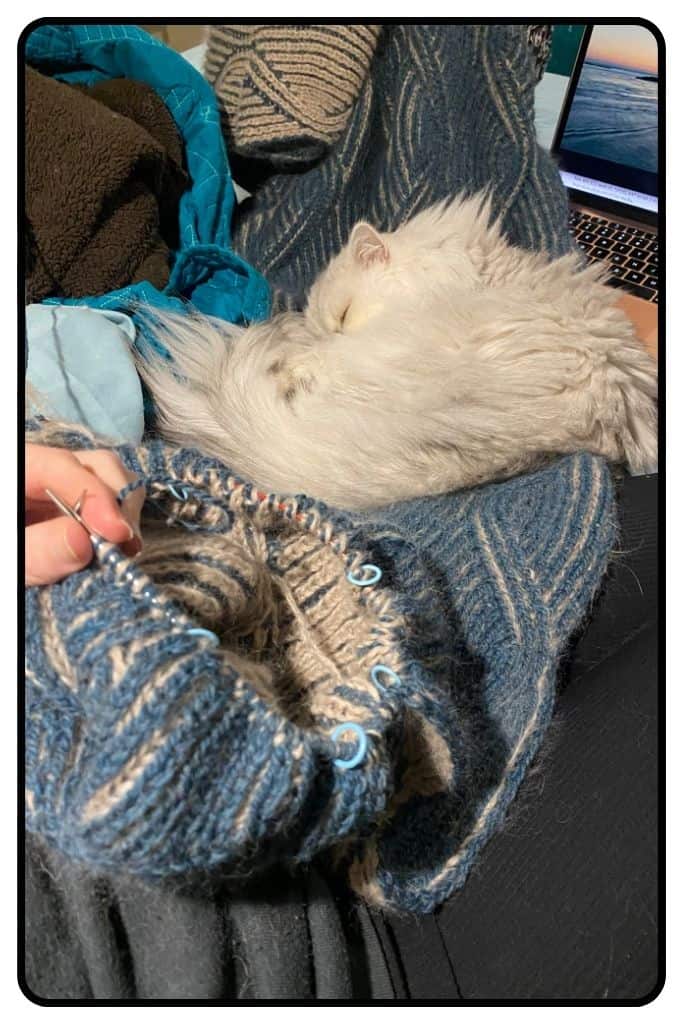
What Are Circular Knitting Needles Used For?
The short answer is that circular needles are versatile enough for almost any project a knitter wants to tackle. It’s been years since I last used straight needles. Despite their name, circular needles are perfect for both flat and in-the-round designs.
Knitters first worked in the round using double pointed needles (DPNs), a method primarily used to make socks, which were popular in the early twentieth century. The invention of the circular needle has made DPNs less commonly used today.
The use of circular knitting needles has surged over the past twenty-plus years. This rapid growth can be attributed to the high quality of modern circular needles, their wide price range, and the growing preference for avoiding the need to seam finished projects.
The invention of the circular needle, and more recently the interchangeable circular needle, has led to a decline in the popularity of using DPNs to work in-the-round.
The beauty of using circular knitting needles is that they aren’t limited to working in-the-round. Knitters can just as easily use them for flat projects, like blankets or scarves. In fact, many would argue that knitting a blanket on circular needles is much easier than trying to fit a large number of stitches onto a straight needle.
What Are Fixed Circular Knitting Needles?
There are two types of circular knitting needles. Fixed or interchangeable.
Fixed needles have the needle tips permanently attached to the cable, forming one continuous piece. The tips and cable cannot be separated.
Interchangeable needles let you easily separate the tips from the cables. This allows you to switch out different needle sizes and adjust the cord length for various projects. This versatility makes them a popular choice for knitters who want flexibility in their knitting.
What Is Important To Remember When Selecting Needles?
Like any craftsman choosing their tools, a knitter’s choice of needles depends on budget and personal preferences.
There are six factors to consider when making your needle selection. But don’t let this overwhelm you, I’ve also put a simple chart together for you with my personal and curated recommendations. You can see that chart by clicking here.
Budget
- Knitting needles—whether straight, circular, or DPNs—come in a wide range of prices. You can buy plastic needles at a dollar store or invest hundreds of dollars in a full set.
- I believe investing in a solid set of circular knitting needles is essential for any serious knitter. The needles I own will last for the entirety of my knitting journey, and I can easily add to the set as needed.
- But hold off on making a large investment on a set until you’ve had a chance to test out different types of needles.
Needle Tip Material
Every knitter has a material preference. There’s no right or wrong choice, but it’s important to test different needle materials to find what feels most comfortable in your hands.
If you have skin allergies, check the materials of the needle tips before using or investing in them.
Metal
Metal tips are durable and won’t break easily, although smaller sizes can bend. Be aware that some metals may create problems over time and knitting with metal needles in cold weather climates can be a bit chilly!
- Copper
- Manufacturers sometimes use copper in knitting needle tips. After exposure to oxygen, the tips can develop a patina and emit a coppery smell, which many find unpleasant. While you can clean off the green or brown film with toothpaste (it works surprisingly well!), if you have skin reactions to copper like I do, it’s best to avoid needles containing this material.
- Nickel
- Nickel often appears in cheaper needles. Since I’m also allergic to nickel, I avoid needles that contain it, but it is a better option than copper.
- Surgical Stainless Steel
- These needle tips offer the best combination of quality and suitability for people with metal allergies. They’re durable and designed to last a lifetime!
Wood
Wood is another popular material for knitting needle tips. With so many types of trees in the world, there’s also a wide variety of woods used!
Here are some popular woods used:
- Bamboo or Birch (very popular for beginner knitters)
- Pros:
- Cost efficient
- Light colored wood makes it easy to see your stitches
- Not too slippery, which is great for beginners just learning to knit
- Cons:
- Because these are softer woods, getting a sharp tip is difficult
- Needles can snap more easily (especially the smaller sizes)
- Bamboo tends to splinter, dent, and dull more easily than birch
- Pros:
- Ebony or African Blackwood
- Pros:
- Extremely hard wood that are nearly impossible to break (the smaller sizes are more likely to break than the larger sizes)
- These feel really comfortable on the hands because they can be highly polished
- Great quality wood that doesn’t splinter or dent
- Cons:
- Pricey – these needles are a luxury item, and their price reflects the quality
- The very tip of the needles can sometimes be metal, which isn’t a bad thing, but some brands are not 100% wood
- These needles are dense and their weight increases with larger sizes
- Because this is a dark wood, working with dark colored yarns can sometimes mess with your eyes.
- Pros:
Plastic
This is going to be the cheapest option. And when I say cheap, I mean CHEAP. I have never found a plastic circular needle that I like on any level. They often have manufacturing errors which cause small pieces of plastic to snag the yarn. The cables are terrible and the needles just don’t feel good in your hands.
I might recommend plastic circulars for young children, as they are inexpensive in case the child doesn’t take to knitting. They are generally safe for kids over the age of 5. However, I personally prefer teaching young children to knit with straight bamboo needles.
Needle Tip Shape
Believe it or not, the very tip of a needle can differ across brands or even within different lines that a brand carries.
There are three general categories for needle tip sharpness. They don’t have official names, but I refer to these tip types as dull, regular, and lace tips.
Dull tips are exactly what they sound like—a blunt tip that makes knitting difficult. It’s hard to insert the needle into the stitch when the tip isn’t sharp.
Regular tips offer a balanced, middle-of-the-road option. They’re a great choice for newer knitters because they aren’t too sharp or too dull.
Lace tips are the gold standard for many knitters. They slide into stitches quickly and smoothly, but their sharpness can sometimes split stitches. If you prefer a pointy tip, this is a great choice for fast and precise knitting.
Cable Material
The quality of the cable is a lot more important than many knitters realize.
The biggest issue with many cables is their lack of flexibility, which causes them to twist into awkward shapes and makes the attached needles spin in your hands. Nine times out of ten, when a knitter tells me they dislike their cables, it’s because of a stiff, cheap plastic cable material.
I have spent years trying out different cables and have found my absolute favorite. Whenever I am working with metal circular needles, I am using a ChiaoGoo Twist Red cable. (They are available on fixed needles as well as interchangeable cables.) ChiaoGoo has a few different cable options but these steel cables coated in red nylon are my absolute favorites.
Cable Connection
The connection where the needle attaches to the cable is massively important. Even though I am listing it near the end, I would consider it more important than anything else above.
Three things can happen at the connection which will cause some serious headaches (and possibly some foul language!).
- The connection can be difficult to tighten properly and cause the needle and the cable to disconnect. (Not fun.)
- The connection can be rough or flawed which causes the yarn to snag every time it passes over the connection. (Not fun.)
- The connection can break easily and your needle seperates from your cable and stitches go flying off. (Not fun.)
I can manage with nickel needles, even if they have a dull tip and a flimsy plastic cable. I might not be thrilled, but I can make it work. However, if the connection keeps coming apart, breaks, or snags… I’m done. Those needles are out the door!
Fixed or Interchangeable Cables
The last consideration is whether you want to work with fixed needles or interchangeable needles.
- Fixed needles
- Pros:
- Not a large upfront investment
- Cons:
- You are stuck with the cable length and needle size. To change the cable length, you’ll need to purchase a completely new needle.
- Keeping circulars organized is tricky. It doesn’t take long for a bunch of needles to get out of control. There are circular organizers (such as this one or this one), but I can attest that it doesn’t take long to outgrow these cases.
- Pros:
- Interchangeable needles
- Pros:
- Keeping your interchangeable sets organized is super easy because almost all sets come with their own case.
- The space that sets take up is a lot less than fixed needles. I have three sets of ChiaoGoo Twist Interchangeable needles, but all three sets fit into one case. This case goes all over the world with me and the needle or cable I need are never out of reach!
- Adding to a set is easy. I use certain size needles and cable lengths more often than others. Rather than purchasing more individual needles, I just have a couple extra needle tips and cables in my favorite lengths in my case. I don’t have to worry about not having the right needles to work with.
- Cons:
- They aren’t cheap. Sets are an investment and it’s important to be sure you have worked with the needles before investing in a full set.
- Pros:
Simple Chart Of Recommended Needles
I’ve worked with a wide range of needles made from different materials, with various tips and cables. To make things easier, I’ve created a simple chart to guide you in choosing the needles I recommend.
These options have the best cables, tips, materials, and connections.
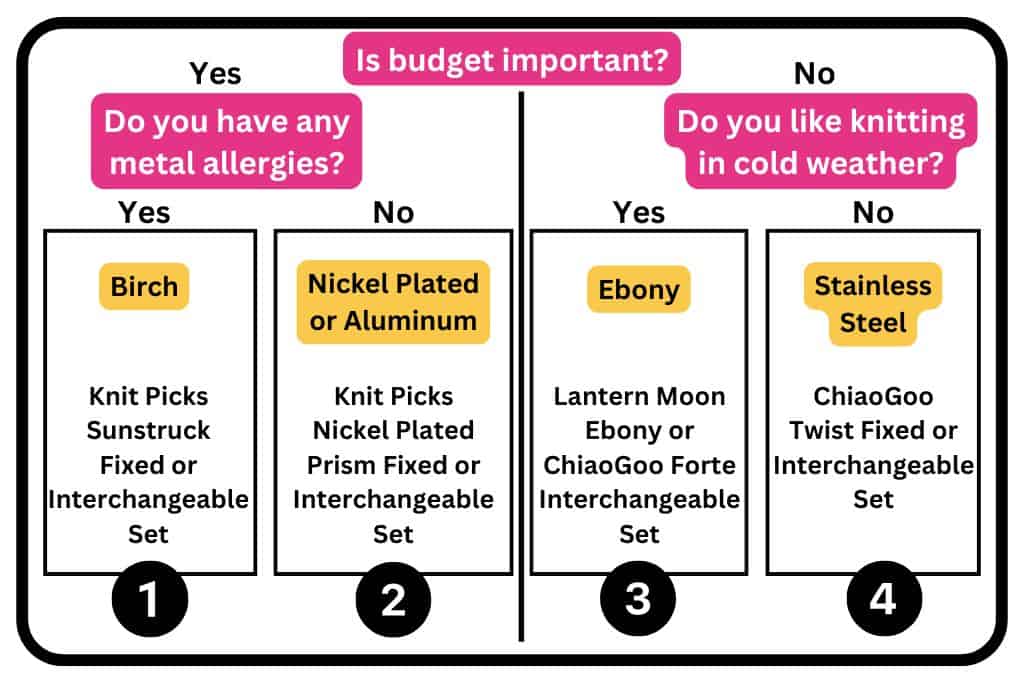
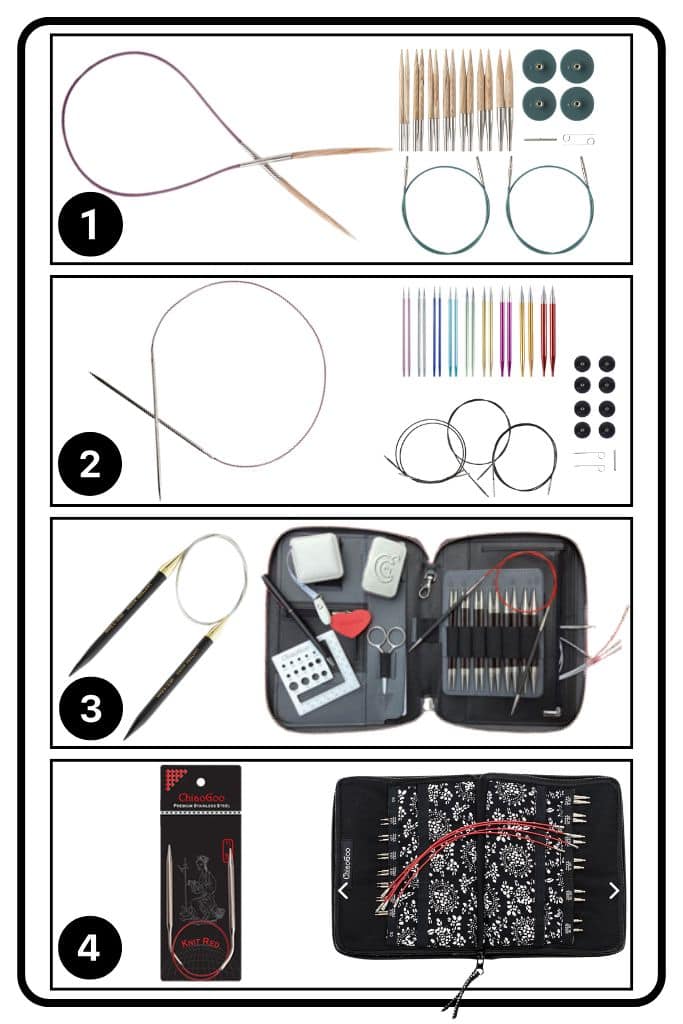
What I recommend:
I have worked with all of the needles above and would be happy to work on any project with any of these needles. (Even the nickel plated options don’t seem to bother my skin!)
NOTE: Be sure you check your needle size and cable length before purchasing.
❶ Knit Picks Sunstruck Fixed Circular Needles or Knit Picks Sunstruck Interchangeable Circular Needle Set
Shop Knit Picks Sunstruck Fixed Circular Needles by clicking here.
Shop Knit Picks Sunstruck Interchangeable Circular Needle Sets by clicking here.
- I use this Sunstruck interchangeable set whenever I need wood needles, which is usually if I’m traveling internationally. I don’t always chance taking my metal sets with me on overseas flights, so this Sunstruck set is perfect for passing security screenings all over the world. (If you’re traveling outside the United States, be sure to purchase the shorter set.)
- Why I personally love these options:
- The wood is strong and durable.
- The tips have a great point that holds up well.
- The price is wonderful for the quality.
- The cable is good quality.
- The connection is really smooth.
❷ Knit Picks Nickel Plated Fixed Circulars or Knit Picks Prism Aluminum Interchangeable Circular Needle Set
Shop Knit Picks Nickel Plated Fixed Circulars by clicking here.
Shop Knit Picks Prism Aluminum Interchangeable Circular Needle Set by clicking here.
- Why I personally love these options:
- The metal is strong and won’t patina.
- The tips have a great point that holds up well.
- The price is wonderful for the quality.
- The cable is good quality.
- The connection is really smooth.
❸ Lantern Moon Ebony Fixed Circulars or ChiaoGoo Forté Ebony Destiny Interchangeable Circular Needle Set
Shop Lantern Moon Ebony Destiny Fixed Circulars by clicking here.
Shop ChiaoGoo Forté 2.0 Ebony Interchangeable Circular Needle Sets by clicking here.
- Why I personally love these options:
- The wood is really strong and smooth.
- The tips have a great point that holds up well.
- The cables are good quality.
- The connection is really smooth.
❹ ChiaoGoo Knit Red Fixed Circular Needles or ChiaoGoo Twist Interchangeable Circular Needle Set
Shop ChiaoGoo Knit Red Fixed Circular Needles by clicking here.
Shop ChiaoGoo Twist Interchangeable Circle Needle Set by clicking here.
- These are the circular knitting needles that I use. My ChiaoGoo Twist Interchangeable needles go with me everywhere!
- Why I personally love these options:
- The metal is strong and won’t patina.
- The tips have a great point that holds up well.
- The price is pretty good considering they are luxury needles.
- The cable is my absolute favorite.
- The connection is really smooth.
Are Circular Needles Good For Beginners?
This is a tricky question.
For the most part, I always teach brand new knitters on short straight bamboo needles. I do this not only because the investment for a new knitter is minimal with bamboo straights, but also because the cable can sometimes distract a knitter that is in the full concentration zone.
I wouldn’t turn down a newbie knitter that wanted to try using circular needles, but I would definitely keep an eye on how they react to the cable. If it seems to be getting in the way, I’d recommend we move onto straights until the basic stitches are learned.
How Are Circular Needles Measured?
To measure a fixed circular needle, you measure the entire length from tip to tip. A 24-inch (60.96 cm) fixed circular needle is measured from one end of the needle to the other when the needle is stretched out straight.
When measuring an interchangeable needle, there are two measurements to account for. The needle tip and the cable length are different numbers to consider.
Needle tips typically measure 4 inches (10.16 cm) or 5 inches (12.7 cm) in length, from the tip to the point where the cable attaches.
Cables are measured from end to end. These measurements can be anywhere from 8 in (20.32) to 50 in (127 cm) and sometimes longer.
If you take two 4-inch (10.16 cm) needle tips and attach a 16-inch (40.64 cm) cable between them, your needles will measure 24-inches (60.96 cm) in total length.
Where To Buy The Best Circular Needle Set
There are a lot of different circular knitting needle sets available in a lot of different places. It can be overwhelming to anyone that isn’t familiar with all of the different brands.
I’ve given a curated list of what I would recommend above as my top choices, but in case you are looking for other options, the two places that I do most of my shopping at are Jimmy Beans Wool and Knit Picks.
Both companies have great options for fixed circular needles and interchangeable needles.
There are a lot of brands that make circular needles, but not all are created equal. Talk to your fellow knitting friends or drop me a DM on Instagram (@explorewithknitsy) if you have any questions about choosing the right needles!
Can You Bring Circular Needles On An Airplane?
Excellent question! This is a topic that I love to talk about!
With my extensive travel experience, I’ve gained a wealth of knowledge about what’s allowed and not allowed on airplanes. Click here to read the detailed article I wrote on this exact topic!
I’ve also researched the carry-on policies for restricted items in countries around the world. If you’re traveling to or from a country outside the United States, check out this article for carry-on restriction policies worldwide.
Final Thoughts – Time To Get Knitting!
Don’t stress about trying to make a big decision. Purchase one fixed circular or borrow one from a friend and see how it goes. Try a few before making any big investments.
Once you find a brand you like, try to stick with that brand for your future circular needle purchases. I always hated having nine different circular needle brands in my case. Things are much cleaner and more organized when everything is uniform. (Of course, I’m also a bit OCD about these things!)
Happy Knitting!






